magazine Podcasting
The ultimate guide to podcasting in your school




Podcasting plays a big part in our schools today, and it will only continue to grow. Whether you’re starting out for the first time or building on the success of an existing podcast in your school, the videos, tips and tools outlined in this edition will have you working with students with confidence. We would love you to drop us a link to your podcast when it’s published or share your stories of the journey with us!
Linda Lazenby
Director,Digital Teaching and Learning
Step-by-step videos to take you through from start to finish.

The brand-new kits are available to book from Term 2, 2024. But, of course you don’t have to have a kit to explore the resources in this issue.



and

Podcasting as a learning platform supports creativity and collaboration across all areas of the curriculum. Embedded in the process are the writing, drafting and planning skills required from students, melded with the technical skills required such as voice and sound production, and mixing skills. Students then take the next step by publishing and promoting their podcasts –developing their real-world skills.
Podcasting can be used acrossKey Learning Areas (KLAs) to demonstrate understanding by students, or can focus on a more broad area such as wellbeing.

Podcasting is a currency for real-life digital literacy skills, demanding creativity, as well as technical skills in production and promotion that supports rich digital learning.

Students can advocate on areas of interest in their school, or in their greater community.
Great for passion projects
Students can pursue their passions and research, prepare and speak on matters close to their hearts.
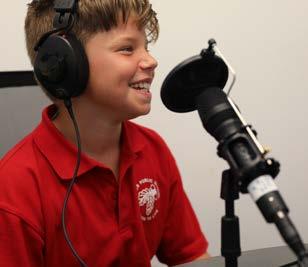
Many elements of the podcasting process are effective assessment points, as well as the outcome itself. Students can demonstrate a range of skills, such as planning, collaboration, drafting, writing and production.
Podcasting is on the rise and will continue to grow and develop in different ways – students will be across these trends as both consumers and producers.
Podcasting can bring communities together through joint projects to build greater community cohesion.
Podcasting employs a range of skills – technical, vocal, audio and even computational thinking.

Have you seen the complementary T4L Kids issue all about podcasting?
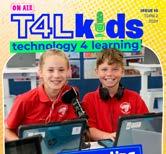

Watch these videos with your class to get you on the path to podcasting!
Introducing the podcasting kit!
Explore the stem.T4L podcasting kit and its role in enhancing students’ communication skills, digital literacy, creativity and confidence.
The kit includes:
• 16 Chromebooks
• 16 microphones
• Rodecaster Pro II
• accessories for individual or studio podcasting.

3:58
Pro tip!
We’re very lucky at ABC Kids listen to have great studios, equipment and software that helps us create high quality podcasts. But, you can create podcasts with nothing but a computer, smartphone or tablet.

2 Microphone setup and features
This video discusses the professional microphones included in the kit and provides a step-by-step guide on setting up the microphone.
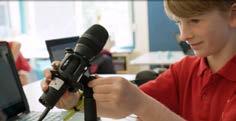
3:01
Learn how to achieve high-quality audio when using the microphone. The video covers microphone setup, speaking techniques, the use of a pop filter, and handling precautions during recording to esnure high quality podcast content.

3:08
 Samantha Turnbull, ABC podcast producer for kids
Samantha Turnbull, ABC podcast producer for kids
4 Chromebooks and WeVideo Editing—for
5 Chromebooks and WeVideo Editing—for
This instructional video shows students the step-by-step process of recording, editing, and exporting a podcast using the WeVideo software.
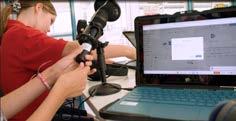
This video demonstrates how teachers can obtain a WeVideo license, create classes and add their students. 2:53
This video explains the process of setting up a studio podcast using the Rodecaster Pro II, allowing up to four microphones simultaneously.
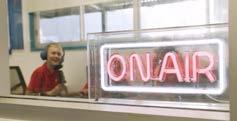
4:46
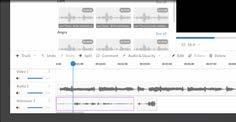
2:53
Delving into the professional controls of the Rodecaster Pro II, this video explores sliding faders, listen and mute buttons, virtual faders and the show library. This video also explores Bluetooth connectivity, managing saved recordings and troubleshooting for an optimal podcasting experience.
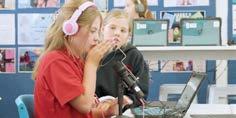

Did you know?
5:22
The figures are in and they’re staggering. 43% of Australians age 12+ have listened to a podcast in the past month; 33% have listened to a podcast in the last week. Weekly listening among Australians is now higher than the U.S. One in ten Australians age 12+ listen to podcasts daily. Source: The Podcast Consumer 2023 Report
Podcasting is taking off in leaps and bounds at Exeter Primary School outside of Sydney, thanks to teacher Christy Hutt and her dynamic student podcasters. Together, they've created a school podcast named The Bell —a nod to the school’s beloved original bell and its symbolic power of teaching and learning excellence. The student-led podcast features interviews with special guests (including other podcasters!) competitions and even secret sounds! It's fun and fresh, and very entertaining.
Christy can see the tangible benefits of podcasting in her classroom. ‘Podcasting has proven to be an excellent medium for our students to practice writing and public speaking in a meaningful context,’ she says. ‘We’ve witnessed a significant boost in their confidence when it comes to public speaking, which has positively impacted their participation in debating and speaking competitions. Our students have also taken to writing podcast scripts in their own time, which is so great to see.’
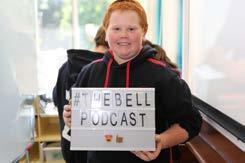
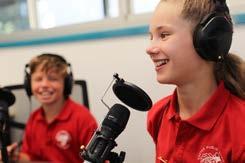

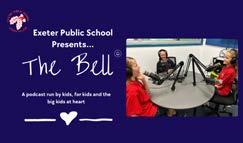
Christy admits she thrives on experimenting with new technologies. ‘My students know I never shy away from a technological challenge! It’s an attitude I always try to instill in them,’ she says. Her best piece of advice for schools embarking on the podcasting journey is to give it a go. While it might seem a bit daunting at first, the podcasting kit is actually very user-friendly.
‘I recommend exposing students to a variety of podcasts so they can grasp different formats and have fun with it,’ says Christy.
Exeter is taking podcasting to the next level this year. ‘Right now, we’re focused on expanding our podcast within the school and ensuring that it is an embedded practice school wide. We recently purchased a set of microphones (the same as those found in the stem.T4L kit) so that we can have our students take them ‘out into the wild’. This will be perfect for our students to commentate at school events like athletics carnivals, cross country and even our Easter hat parade that is coming up. We are so excited to showcase the vibrant spirit of our school community on our podcast.’
The student podcasters love making The Bell! Hear from the Exeter students in the T4L Kids podcasting issue. Behind the scenes with Mrs Hutt. Listen to The Bell here!Home of the amazing H Pop Studio and mascot Howie, the students and staff at Hilltop Road are absolutely smashing it in the studio! Bursting with creativity, hip-hop, beat making and more, students are creating everything from music, to slam poetry and uploading their rhythms and rhymes for the community to listen to!
The incredible program connects students with their community and podcasting starts from kindergarten! Older students are working on radio skills right through from presenting and crew work, to editing and production.
Hilltop Road Public School’s podcasting and beatmaking studio combines creativity with professional skill development, making their students ready for the real world of sound production.
Learn more about Hilltop Road’s podcasting on Viva Hotspots Episode 119
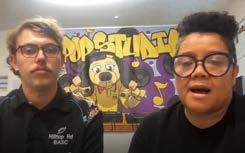



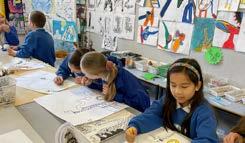
The Berry Way Podcast began in 2002 as a way for students to connect with their wider school community. Students worked to gather vox pops from fellow students and teachers, featuring a principal’s report and engaging school stories and updates. Hosted by the school student leadership team, the Berry Way Podcast features great production values, and an authentic student voice.
Get inspired and listen to the Berry Way Podcast here!
Maxine and Aaron bring a professional eye to the H Pop Studio. Students producing under the gaze of Howie the studio mascot. The Berry Way is produced with WeVideo. Berry public school captains. Berry Public School Podcast page.
Digital Learning Advisor Megan Anderson shares her experience of podcasting in the classroom and at home!
Before you start, think about what your students are going to talk about. Is your goal oral communication, writing or a specific topic? Depending on your lesson outcome, you could provide students with the option to choose their own topics or incorporate the podcast into the lesson to reinforce prior content.
Acknowledge the noises in your classroom. How can you minimise background sound for your students? Can you send students to an outside space? Could this be a rotation activity where students use quiet neighbouring spaces to record? What soft furnishings could you add to your space to absorb sounds? ListenApp for Schools is a NSW DoE app available on iPad or Mac that assesses the acoustic properties of your classroom. It has many more benefits than the ability to create quality podcasts!


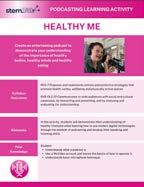
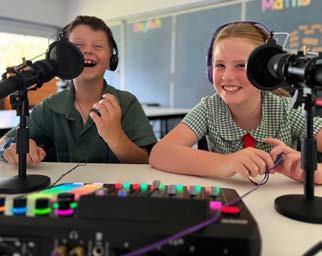
The key to students’ recordings running smoothly is good planning. Encourage your students to plan for their podcast just as they would for writing a text. Some students like a script, which can come from a piece of writing that students have already created. Some students can expand on dot points naturally and easily. Perhaps you could give students time to test out which technique will suit them best.
It’s important to educate yourself and your students on copyright guidelines. When you can, it is best for students to use their own work or the files available within software they are using, such as WeVideo or Canva. Feel free to use Creative Commons audio files, but make sure you attribute your source and the author. Got more questions? Head over to Smart Copying.
The stem.T4L Learning Library has classroom podcast resources to use right now.
Don’t forget to explore logo design and podcast promotion in T4L Kids.
Have you recorded a Welcome to Country or Acknowledgement of Country for your podcast?
Read our podcast publishing advice for teachers on creating discoverable, public podcasts.